We caught up with the brilliant and insightful Cara Romano a few weeks ago and have shared our conversation below.
Cara, love having you share your insights with us. Before we ask you more questions, maybe you can take a moment to introduce yourself to our readers who might have missed our earlier conversations?
I have been an artist since childhood, but I am very new to having a business. I studied and created art as an undergraduate and graduate student, but up until recently I had pretty much written it off as a way to create income. After working at a bead store, I started my own jewelry making business in 2021. For me, it was easier to translate the art of jewelry into products that people would want to buy, rather than my artwork. My art was so personal, and I would get very attached to it, so it was hard to think of it as a commodity.
After I started the business with my jewelry, I was encouraged by family and friends to also incorporate my art. I realized that I wanted my business to reflect my entire self, and my artwork needed to be a part of it. This took a shift in my thinking about my creative production. I had to let go of thinking about my art as personal and precious, and start thinking about it as a way to share my vision, tell a story, connect with others. I also had to conquer a deep fear of putting myself and my art out into the world. I was afraid of criticism, judgment, and all that good stuff.
What I realized as I started forcing myself to share my work was that it really brought people joy – and that was a turning point for me. I had to take the focus off of myself and let go of my fear of failure. Things really started opening up at that point. I realized I could sell reproductions of my work, along with my originals, so that I could have different price points.. It actually became a fun challenge – to see which pieces would be most popular. I started doing events and art fairs, where I met all sorts of interesting people – both potential customers and other artists and artisans. I felt like I was part of a community, and it brought my artistic practice back to life.
In terms of my art itself, I work in many different styles and media.I specialize in creating abstract paintings and works on paper that are made from the direct drawing and painting of sunlight and shadow patterns, a process I have been using for about 20 years. In some of my pieces, I use only this process. In others, I use the patterns as a framework to develop abstract compositions that also include collage elements, representational drawing, and intuitive mark-making. Sometimes the collaged pieces are from previous light-based drawings or paintings. This repetition of pattern and process is consistent with the idea that time, represented by moving light and shadow, is cyclical and infinite.
In my business, I now sell original artwork, handmade jewelry, prints, and merchandise. I am also developing an offering called “Custom Shadow Art,” where I will create paintings based upon light and shadow patterns that I collect from my customers’ living and working spaces, or shadows cast by specific objects that hold meaning for the customer.
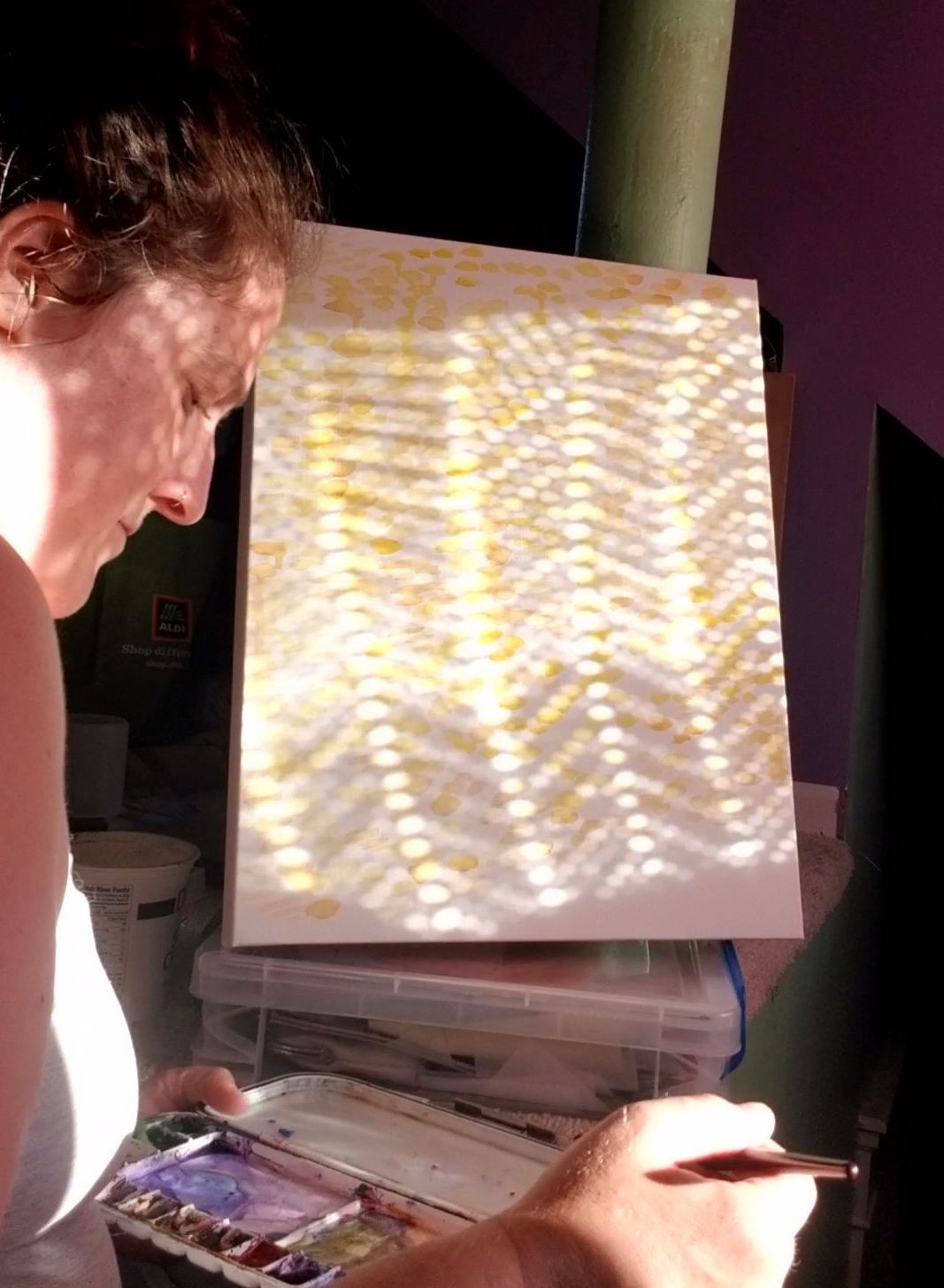
Alright, Cara thanks for taking the time to share your stories and insights with us today. We’d love to hear about a project that you’ve worked on that’s meant a lot to you.
One of the most meaningful projects I have worked on is a fairly recent endeavor called “The Post-It Project”. The project culminated in an installation titled “Spectrum” at Negative Space Gallery in Cleveland, Ohio, in the spring of 2023, but it actually began many years ago. While visiting Portland, Oregon, in 2011, I created an installation of post-it notes on the wall to capture the sunlight coming through the Venetian blinds. As the light moved across the wall, I added post-its, both the iconic yellow post-it notes and also slightly larger purple and orange post-its, tracing the shapes of the light onto the small pieces of paper. I collected the post-its and took them home with me, vowing that I would create something else with them.
Over the next few years, I spent many meditative hours coloring the patterns on the smaller yellow post-its in with colored pencils, gently layering the colors over one another. The activity was quite a contrast to the initial, spontaneous impulse with which I created the original installation back in 2011. You can find some of these yellow post-it notes collaged into several of my larger artworks.
As the yellow post-it supply depleted, I turned to the purple and orange post-its. In February of 2023, I began the next phase of the Post-It Project, which involved the media of gouache and ink. Gouache is similar to watercolor but is more opaque, and you use a lot less water with it. I had never worked with it before this project, but it is the ideal medium for what I wanted to achieve. I loved the way the vivid colors popped out against the purple of the post-its. I started with yellow, the complementary color to purple, but then began to branch out into other colors, moving along in rainbow order (red, orange, yellow, green, blue, purple). I began imagining the original installation from Portland, albeit very different, installed on a wall in a sort of wave pattern, arranged in the order of the colors of the rainbow.
Once I realized that I was going to create a rainbow, the purpose of this phase of the Post-It Project became clear. I had recently given a lot of thought to issues related to gender identity, because I have a close family member who identifies as transgender. Thinking about gender as a spectrum was consistent with the way I think about opposites in my life and art. I think about sets of binaries, such as male and female, or light and shadow, as interdependent pairs that are not fixed, but fluid. To perceive light as an independent entity, we need structures that create shadows. Without the shadow, the light has no definition. We need opposites, or binary pairings, to help us understand and make sense of physical reality, but the boundaries between those opposites are always shifting, as you can see in my artwork when I trace the patterns of movement in light and shadow. Gender is no exception – for some people it is fixed, but for others it is fluid. Some of us feel comfortable in the bodies we were born in, while others do not, and so they may seek out gender-affirming care or treatment. There are more than two options when it comes to gender, and as I see it, to most things. I think the spectrum is a metaphor or model that we should embrace at this point in human history. We need to evolve beyond either/or thinking, to experience the rich complexity of life, and to put an end to the destructive attitudes and actions that seek to uphold outdated beliefs and stereotypes.
I decided to use the installation, “Spectrum,” and the Post-It Project in general, as a way to raise money for several LGBTQIA+ organizations, and to raise awareness about the human rights of LGBTQIA+ people, currently being threatened by a slew of anti-LGBTQIA+ legislation across the country. “Spectrum” was specifically dedicated to all individuals going through any type of transition so that they can be their full, authentic self, and in particular, to those courageously transitioning along the spectrum of gender identity.
During the exhibition, half of the proceeds from sales from the post-its went to several local LGBTQIA+ organizations. Now that “Spectrum” has been deinstalled, I am donating 25% of proceeds from the sale of the remaining post-its to the Trevor Project, which supports the mental health of LGBTQIA+ youth, who are at a much greater risk of suicide than their peers.
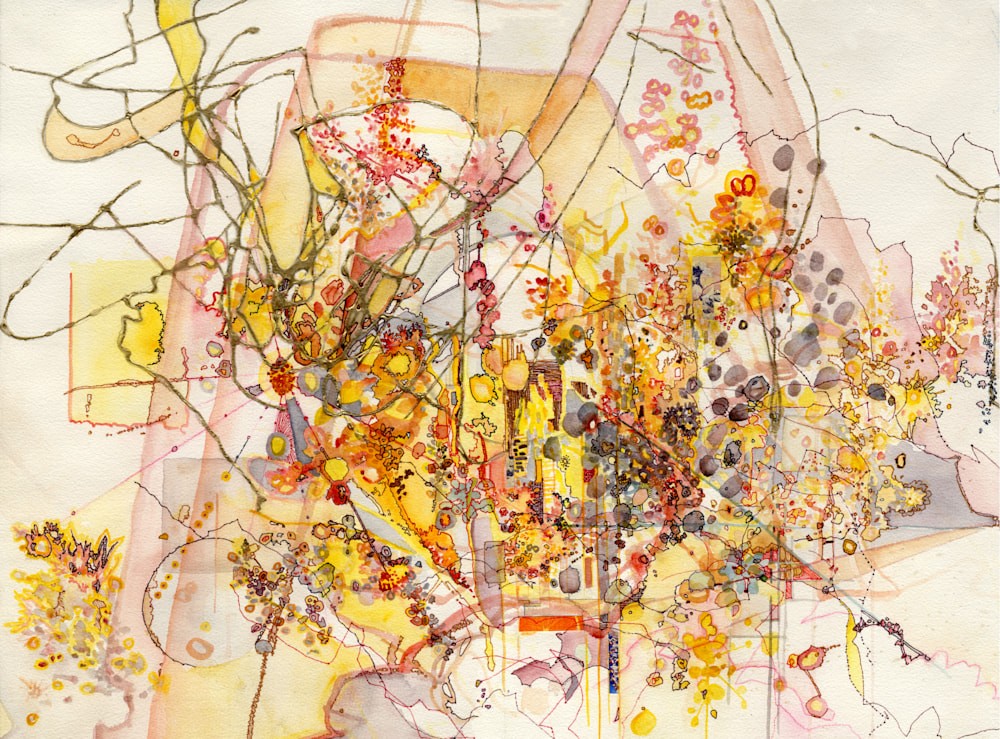
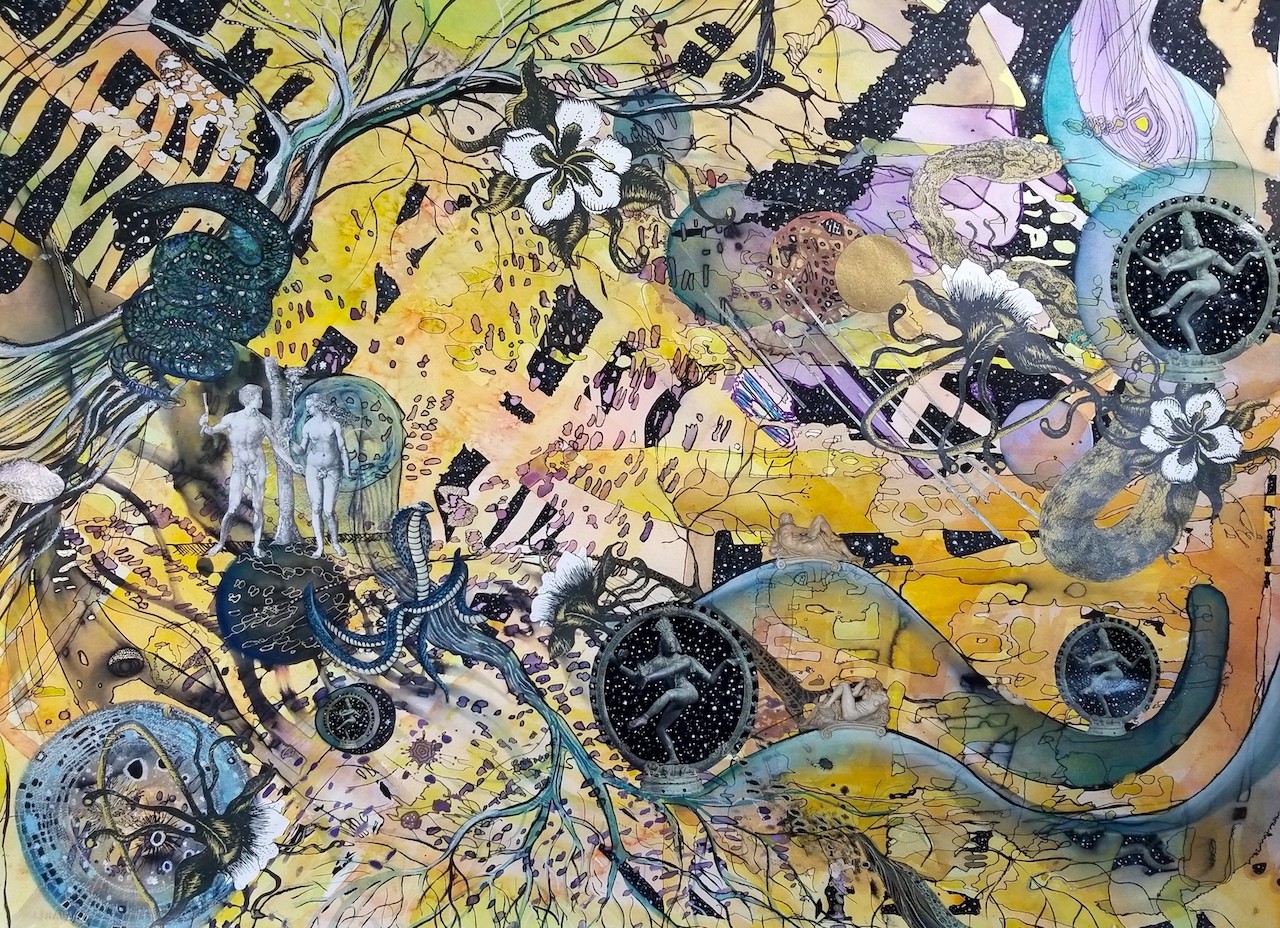
How about pivoting – can you share the story of a time you’ve had to pivot?
After graduate school, I thought everything was falling into place for me. I wanted to work as a museum professional, and I was chosen for a curatorial internship at the Dallas Museum of Art. My long-term goal was to move to the Southwest and to work in one of the museums in New Mexico or Arizona, and I thought, Dallas is sort of in the right direction. I met some people who seemed to be helping me get into the right position, but things didn’t pan out. On top of that, there was the big economic crash of 2008, so by the time I was looking for museum work in 2009, there simply wasn’t any.
I moved back to Ohio and in with my parents, feeling pretty defeated. The pivot, which was not an immediate, self-conscious pivot, but rather a series of baby steps, began when I was hired to teach a drawing class at Cuyahoga Community College. It was a bit of a whim, because I hadn’t taught drawing before. My MFA is actually in Sculpture, so I had only taught 3D and conceptual art classes. But I just had this feeling that I would enjoy and be good at teaching drawing. At the same time, I got a part-time job working at an amazing bead store in my hometown of Oberlin, Ohio. This led me to my jewelry making, which eventually led to starting my business.
Through the connections and friends I made through my job teaching at Tri-C (I was right – I enjoyed and was good at teaching drawing!), I eventually had an art show in Cleveland. At the opening of that show, I met my husband, Sean, and soon enough I moved to Cleveland myself. Now, I still teach at Tri-C, and I recently started working as a Gallery Director for one of their campus galleries, so I am, after a bit of a hiatus, back in the museum/gallery profession. I am still involved with the gallery, Negative Space, where I featured The Post-It Project last spring. I was able to buy a house near Lake Erie where I live with Sean, his son, Oliver, and our pets, or “furmily” as we like to call them. I am close to my family in Oberlin, something that has become very important as I’ve gotten older. I teach at several places and have wonderful students. I consider myself to be extremely fortunate, with a lot of love in my life. I am finally recognizing that, although I’ve had lots of help from lots of people, I built this life for myself. Not through one big, dramatic pivot, but through a series of baby steps in the right direction.


We often hear about learning lessons – but just as important is unlearning lessons. Have you ever had to unlearn a lesson?
Something I’ve had to unlearn, and I’m still working on unlearning, is people-pleasing and looking for approval outside myself. I am a real empath who cares deeply about other people. I have always been able to imagine what it would be like to walk in someone else’s shoes, and I can usually understand multiple points of views. This is definitely a gift, and I wouldn’t want to be any other way, but with it came a lot of insecurity and poor boundaries. It has taken a lot of time, therapy, and practice, tuning into what I want, what my opinions and feelings really are, what I want to say with my voice. I have struggled with this in my personal life and my artistic practice. In my personal life, this has gotten me into a few harmful situations and relationships, where other people have taken advantage of my kindness. Therapy and a 12-step program have both helped immensely to heal from these things. In my artistic work, I wanted to make all of my teachers and professors happy and do exactly what they suggested. The trouble was, they were often suggesting opposite, though equally valid, solutions. It was so hard to figure out what I really wanted to do and say with my art.
I actually found the answer to this by studying and undergoing Art Therapy. It helped me to get in touch with my deepest emotions, and bring them into my art. A side effect of having poor boundaries is not being able to make decisions. I have learned that this takes practice. It’s not always about making the perfect decision, or finding the perfect solution, but simply taking a step to move things along. Perfectionism is another side effect of people pleasing with which many of us struggle. I have come to realize that there is no perfect. I like the phrase “good is good enough”. I strive for good, for goodness in my life and art, and try to let go of perfection.
Running my business has really helped me to grow as well. I have had some business coaching, and I joined the WINC program, which stands for Women In Community, a women’s business program that emphasizes spiritual alignment and feminine business culture. Through it I’ve met some amazing people from all over the world, and I am learning the skill of thinking like the CEO of my own life. I am now taking more risks, speaking up for myself and others, taking steps to create my own reality, and, slowly but surely, income!
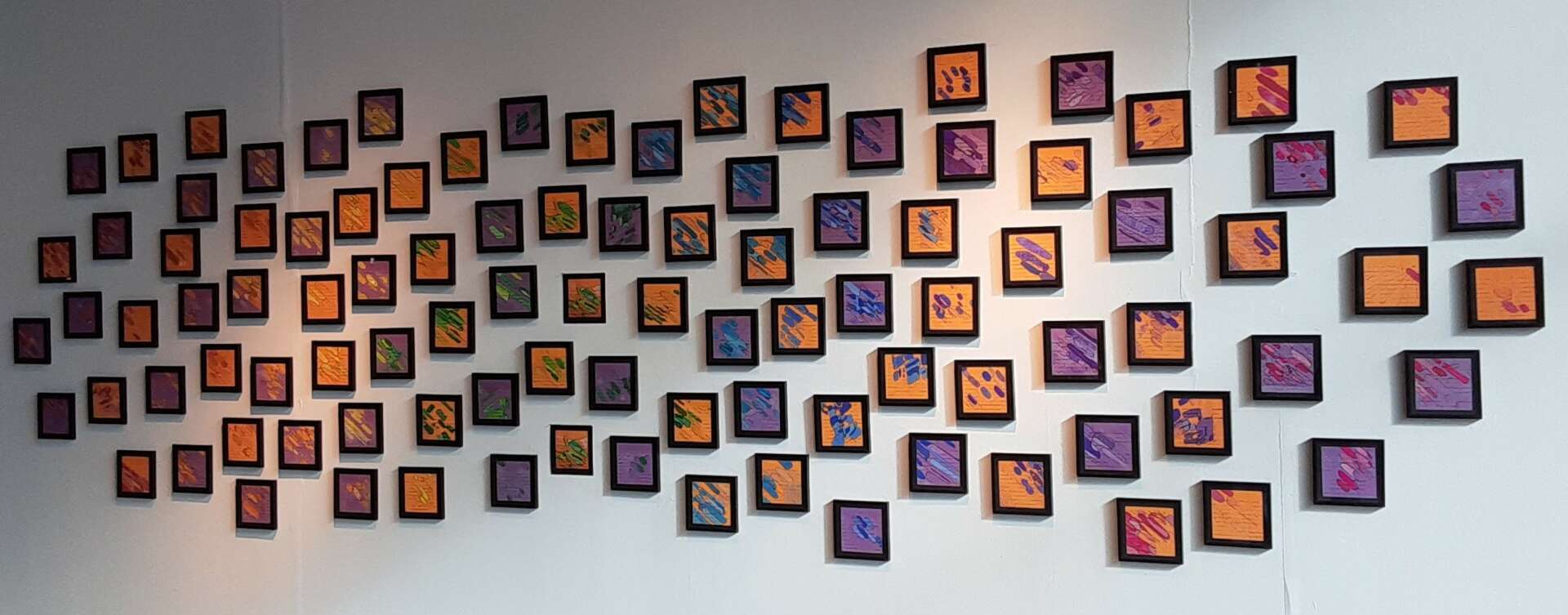
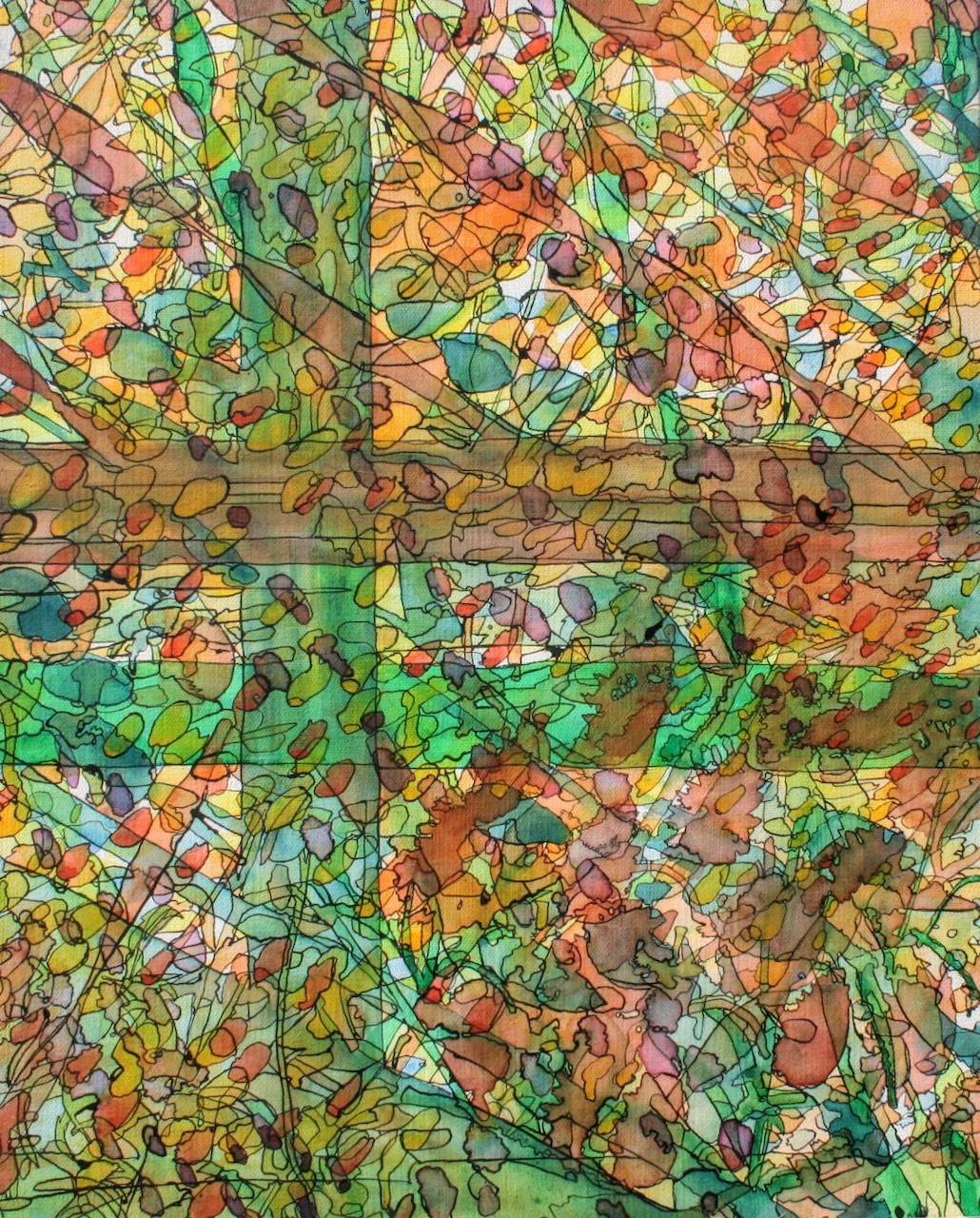
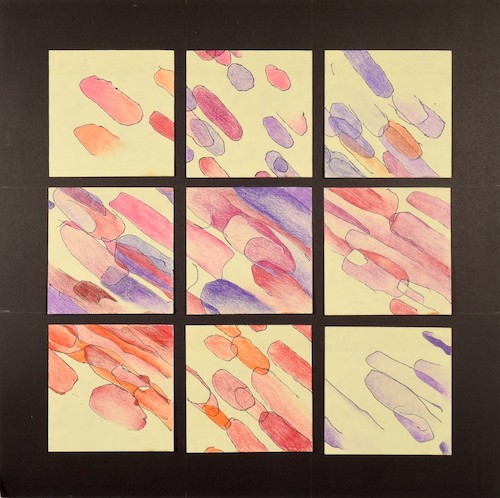
Contact Info:
- Website: https://www.caralynnromano.com/
- Instagram: https://www.instagram.com/clromanoart/
- Facebook: https://www.facebook.com/profile.php?id=100084841534658. (Cara L. Romano Fine Art & Jewelry)


